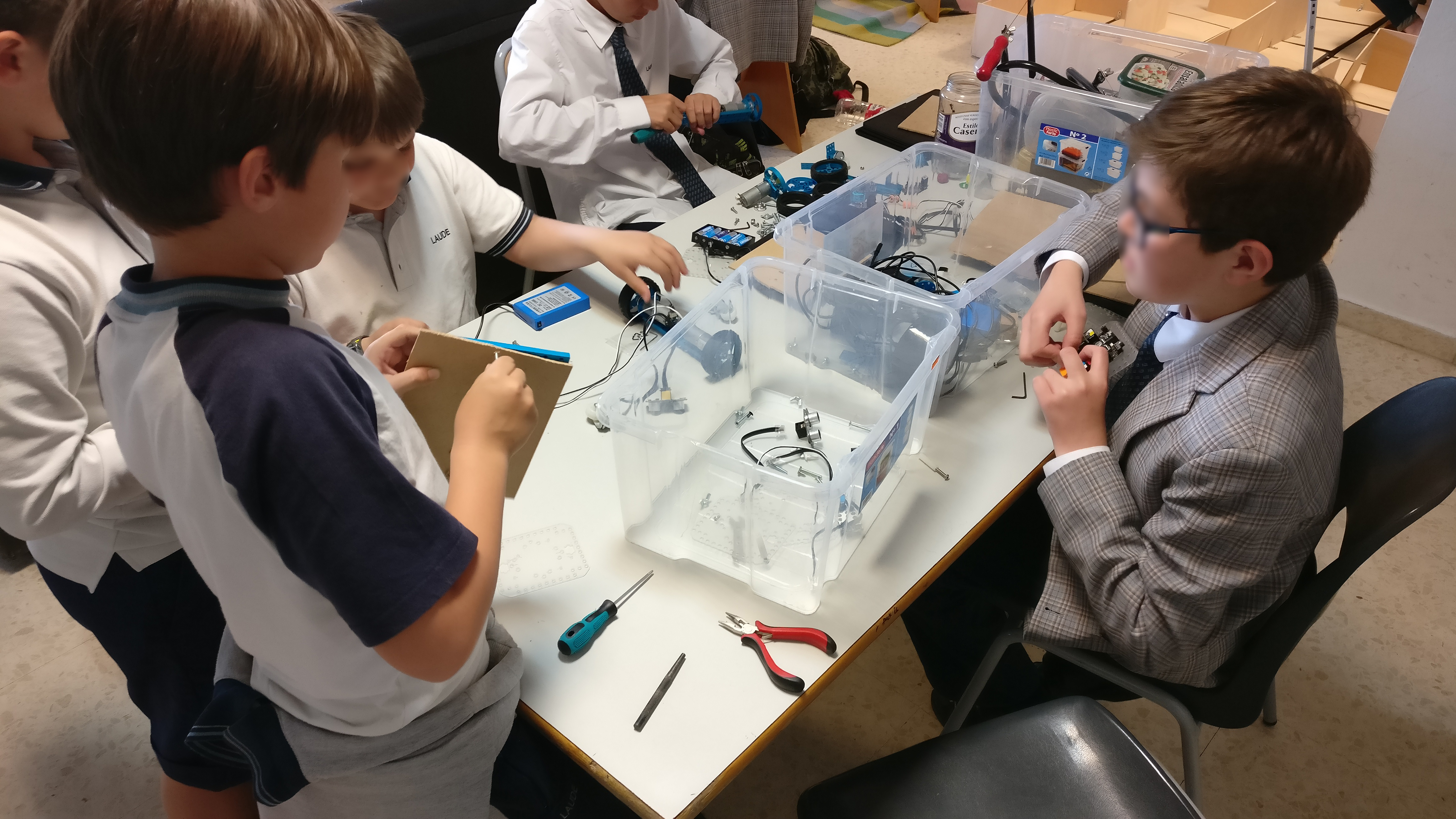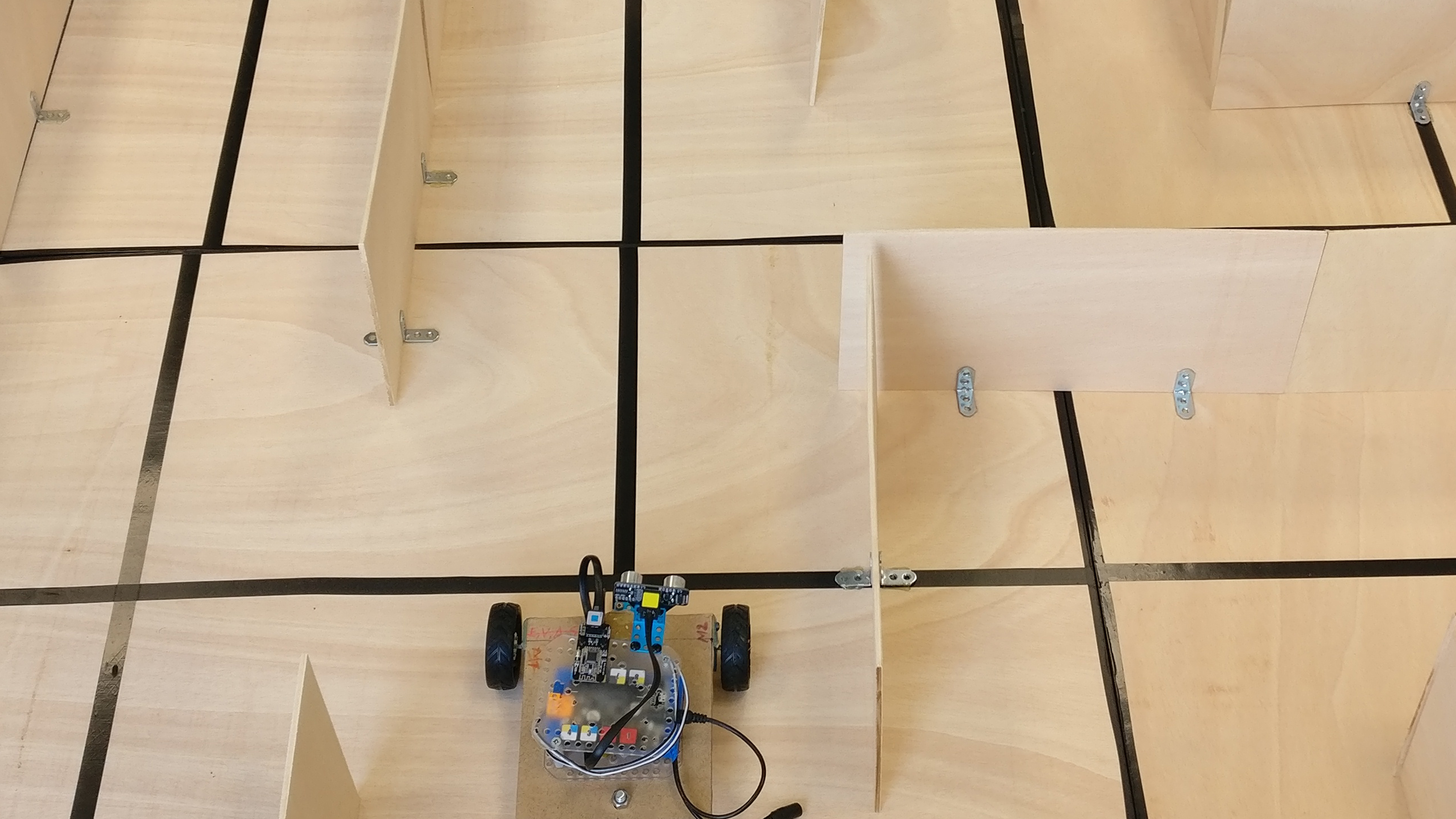This week we have started by presenting our students with a labyrinth, we hope that they will be able to go through it with the robot. This time they will use a robot model called a makeblock.
The difficulty of this labyrinth lies in the need to use sensors to read the walls and lines of the labyrinth, and programming will be a great challenge.
This labyrinth allows students to learn from each other as each group faces the resolution of the labyrinth in a different way.
Competences
According to the European Union, it is necessary for students to acquire a series of skills, in our case they will be the following:
- Digital competence (CD) is that which involves the creative, critical and secure use of information and communication technologies to achieve objectives.
In our labyrinth we pose a challenge that must be solved using the robot and the sensors. On the other hand, not only do they learn about robotics and sensors, but they also look for information using the tablet, so that the students learn to cope with a challenge and look for solutions using tics. - Sense of initiative and entrepreneurial spirit (SIE) to transform ideas into actions.
We encourage the students to find their way to solve the labyrinth, with this we get the students to transform their ideas into a solution to the problem while the trainers provide ideas to enhance their solution. - Mathematical competence involves the ability to apply mathematical reasoning and its tools to describe, interpret and predict different phenomena in their context.
In our case, students must understand the mathematical part of robot programming. An example can be seen in the robot motors, in this case a positive speed causes the motor to rotate in one direction and a negative direction causes the motor to rotate in the opposite direction. - Learning to learn competence (LCAA) implies that learners manage their learning processes to achieve autonomous and effective learning.
In our labyrinth the student manages his or her knowledge to structure it in such a way as to obtain a way to solve the labyrinth.
Advantages
The acquisition of all of these skills so that in the future the student will have the tools to deal with a problem even though in some cases they may not have the knowledge to solve it a priori.
On the other hand, learning programming concepts means that when faced with a challenge, the student knows how to structure and organize all the actions necessary for its resolution.
Methodology
By proposing this labyrinth we introduce project-based learning, this learning is based on students learning new concepts by applying them directly in an active way so that they can observe a real application of them.
Project-based learning is the realisation of a project, usually of a certain size and in a group. This project has been previously analyzed by the teacher to ensure that the student has everything needed to solve it, and that in its resolution will develop all the skills that is desired.
It will be an entertaining session as the robots find their way out. Good luck to you all! 🙂






